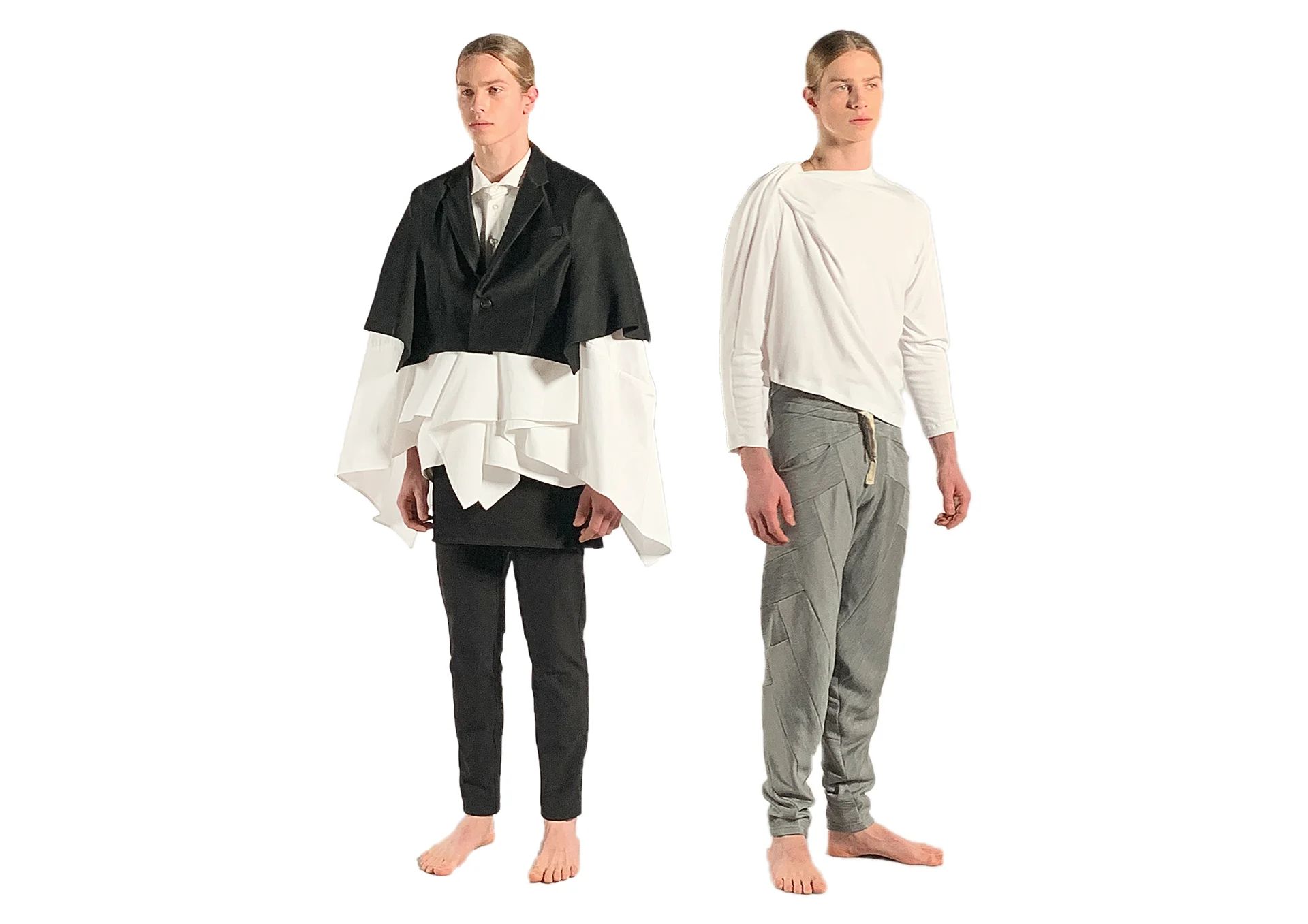
LCFMA22: Minghao Tang's garment designs for post-pandemic office workers

- Written byJ Igiri
- Published date 17 March 2022

Our #LCFMA22 celebrations launched in February with an inaugural catwalk, showroom and exhibition at London Fashion Week. These events highlighted the inspiring projects created by London College of Fashion’s postgraduate students.
Continuing our series of interviews, we caught up with MA Pattern and Garment Technology graduate Minghao Tang, whose practice includes creative pattern cutting and pushing the boundaries of menswear design to explore possibilities of unconventional garment shapes. Minghao’s work takes inspiration from Cantonese cultures and focuses on the relationship between cultural references and social issues.
Tell us a bit about your collection – what themes are you exploring?
My MA collection applies comedy subcultures into garment design. My aim was to improve the mental wellbeing of office workers in the post-pandemic world and enable white-collar workers to maintain a healthy work-life balance under the new hybrid working model. To do this, I embodied the concept of Mo Lei Tau – a Cantonese comedy subculture – into the creative pattern cutting process.

What inspires your work?
Most of my inspiration for this project came from observational research. I noticed that there is rising mental stress among office workers going back to work post-pandemic. Soon after the lockdown, I interviewed a group of office workers. Their home working activities inspired me to create my garment pattern designs.
Who / what are some of your biggest influences?
Chalayan is one of my favourite designers, I feel his work pays close attention to fit while innovating the possible forms of fashion design. His Fall Winter 2000 collection combines furniture into garments which questions the relationship between the body and objects.
For my Masters project, I took inspiration from Holly McQuillan’s zero waste pattern technique to develop my Herringbone trousers pattern. I further developed the idea by combining Sam Kerr’s tessellation artwork to create a pair of trousers constructed by a repetitive tile pattern.
What challenges did you face during the making of your final collection, and how did you overcome them?
In the beginning of my Masters project, I had difficulty contacting participants to take part in face-to-face interviews as they were concerned with catching Covid-19. I was worried that my project might not proceed as my design was based on the interview results. However, I amended my schedule to do more contextual research first. This allowed me to have a better understanding of the purpose of the questions that I intended to ask. I found that good time management is important, especially when there are lots of unforeseen circumstances.

Is there any piece of advice or insight from the course that stuck out to you?
Making contacts is important to me. It is good to get a different opinion when you feel indecisive. During the lockdown, I missed being able to talk face-to-face to my classmates, tutors and people from the industry. These connections are important to develop my career.
What excites you the most about the fashion industry?
I am excited about how agile the fashion industry is, particularly during the Covid-19 pandemic. During lockdown, we saw designers presenting their fashion show digitally which is an effective way to introduce fashion design under social distancing restrictions.
What are your hopes and plans for life after graduation?
The pandemic has created a very competitive job market for graduates. At the moment, I am pleased to have secured a role which allows me to build upon my pattern cutting knowledge and be able to learn more about running a fashion business. My ultimate career goal is to become a leading menswear designer.
- Keep up to date with the LCFMA22 Campaign.
- Find out more about MA Pattern and Garment Technology at LCF.
- View our upcoming Open Days.